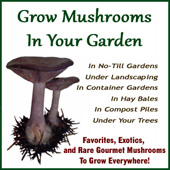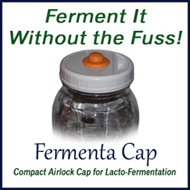Turkeys
Narragansett Turkey
Avid foragers of insects and vegetation, the Narragansett is an American classic that is now gaining popularity in backyard flocks. It was a prolific reproducer historically, and hens will still brood their own young.
Popular within a small commercial niche now, the Narragansett is prized for flavorful meat, and recognized as a hardy breed with good survivability.
They are reputed to be calm and the hens are good mothers. They are one of the best layers for turkeys, and they mature early.
Narragansetts are also more readily available than many Heritage turkey breeds.
- Type - meat
- Size - medium to large, depending on bloodlines
- Production Capacity - good production of flavorful meat
- Special Features - lay more eggs and young survive well
- Best for Farms - great choice for small farms and homesteads - top choice for pastured turkey
- Eggs, Milk, Meat Features - fine flavored meat, cream to brown eggs
- Other Products - some market for feathers
- Historic or Contemporary Significance - of especial importance to the history in New England, this turkey is still of great value to home farms and small commercial farms.
- Housing and Space Requirement - require more space than some breeds, and really do need forage space for optimal health
- Regional Adaptations - adaptable to a range of conditions
- Feed Requirement - higher need than other breeds for forage or fodder feeds, and for insect or meat proteins
- Other Considerations - Some characteristics depend on specific bloodlines. Narragansetts are a good starting point, but the breed will benefit from selection to fully restore Heritage characteristics.
A NOTE ABOUT TURKEYS:
Turkeys are typically raised in some degree of confinement, though many have some access to pasture (not sufficient for significant feed contribution). In this situation, and where breeding emphasizes the ability to rapidly gain weight over all other traits, Turkeys have lost much of their foraging ability. The wonderful thing is though, that these instincts can be sharpened right back up, simply by making a variety of foods available, and by reducing pre-mixed feeds so the birds are required to vary their diet.
Turkeys are omnivores, and eat pretty much anything, including bugs, small rodents, vegetables, weeds, fruits, grains, seeds, nuts, etc. They are most fertile with a healthy amount of animal or insect proteins, and they are healthiest when they have plenty of greens to forage.
Turkeys may be fed a variety of those items, generally smaller seeds and smaller pieces of vegetation (dried or fresh) from the time they hatch. They will usually eat what is familiar, and it may take several exposures to get them to eat a new thing if they have been fed commercial feeds (this is true of most animals). But with repetition, those things which are good for them will eventually be consumed, and they will be willing to eat an amazing variety of foods, and to hunt and forage for a large portion of their own food if good forage is made available. Not only does their foraging instinct sharpen up, but they quickly learn to self-regulate their nutritional needs (provided a variety is available) and they will rarely eat anything that is harmful for them once they are practiced at eating forage foods (the exception is if you chop and mix foods and thereby force them to eat the bad along with the good, or if there is nothing else for them to eat but harmful foods). Animals are smart when we let them be!
Many Heritage breeds are smaller than the breed standard calls for since they have not been bred for productivity for many decades. Selective breeding for several generations will restore production traits, and other utility traits, and restore not only the breed names, but the true value of the breed.
Male Turkeys can always be aggressive in breeding season, and some may be just out of general cussedness. An angry Tom is nothing to be casual about. Hens can be defensive when brooding. Even "calm" breeds will have these issues, they are animals that protect their territory and their young. Respecting that makes it easier to raise Turkeys without unpleasant confrontations. More aggressive toms and hens also are better defenders against predators, so there is a definite trade-off.
The Americal Poultry Association claims that there is only one breed of turkey, and many strains. Their definition of a breed versus a variety seems to contradict their position where turkeys are concerned. We, and a number of other authorities which have as much right to define them as the APA does, feel otherwise, and refer to the majority of Turkeys as Breeds rather than Varieties.
 Click to Download Your Free Heritage Pickling and Culturing e-Book Now!
Click to Download Your Free Heritage Pickling and Culturing e-Book Now!
Instant Download, NO Registration Required!






